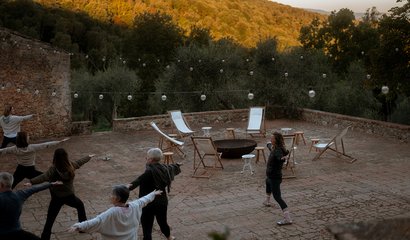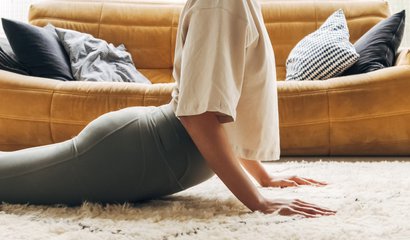Nov. 29, 2017
Sustainable Yoga Series: Downward Dog
In my own teaching, I have seen so many people excited to learn a different approach to their yoga. One that maintains the heart-filled, mindful awareness and combined with an deeper understanding of human movement. And the proof is in the pudding; making conscious shifts in one's practice, updated cues that are supported by research based evidence, you can feel the difference almost immediately.
Anyone who knows me, knows that I have never been good at following trends. And that goes for my yoga practice as well. I never got into hot yoga or Anusara, I only practiced Ashtanga for a time because it was the cheapest studio while I was a starving student and don't even talk to me about overpriced yoga clothes. Yet there is one trend that I am happy to be deeply involved in. In the past couple of years I have seen a progressive shift not only in yoga but in many different movement modalities.
I'm seeing our understanding of the human body and movement shift from a 2D, parts and pieces understanding towards a beautiful integration of fascia, a deeper understanding of the balance of mobility and stability and moving our bodies in more natural ways. Less exercise, more movement. This understanding when applied to yoga, updates the practice into one that is appropriate and supportive for longterm joint health and physical sustainability.
In my own teaching, I have seen so many people excited to learn a different approach to their yoga. One that maintains the heart-filled, mindful awareness and combined with an deeper understanding of human movement. And the proof is in the pudding; making conscious shifts in one's practice, updated cues that are supported by research based evidence, you can feel the difference almost immediately. A word of warning though, your poses might not look as pretty, you might have to work harder at first, but the payoff is that you are going to enjoy a practice that both immediately supports positive change in your body and as you age. I don't know about you, but I like the sound of that! Let's get started.
I thought it would be fitting to start with one of the most quintessential yoga postures: Downward Facing Dog. Now there isn't just one update to this pose, there are a couple of different ways to make your down dog a sustainable one for your shoulder joints, wrists and low back. This will week focus on one simple change for lasting results.
Updating yoga asanas with awareness of the context of our western cultural body is the first step in evolving the practice. Trying to fit bodies into yoga asanas that originated in a different culture where squatting was the norm is problematic. Our western cultural body has essentially adapted our body to chairs and a sedentary lifestyle and as a result, tight hips and low back and rounded shoulders seem to be the new normal. That tightness and adaptation can't help but show up in a yoga practice.
If you are a yoga teacher, you will no doubt be familiar with down dogs that look a little something like this:
Note the rounded low back and tucked pelvis. If we flip the picture around, do you see that chair shape?
While downward dog seems to be the go-to pose in most yoga classes, it is a pose that asks a lot of the body. In someone with a good balance of upper body strength and mobility and open hamstrings, downward dog can be appropriate. In a tight, chair-adapted body, that is another story. Bearing weight on tight, immobile shoulders and weak wrists transfers the load to areas that are not strong enough to support the weight and compensation inevitably happens and can lead to repetitive stress injuries.
Downward dog updated:
My favourite way to adapt downward dog is to take the hamstrings out of the equation. Your hamstrings are attached to your sit bones, and if they are tight they will pull the pelvis down into a tucked position. In downward dog, that tucked pelvis puts strain on the lower back and as mentioned above, adds to the unhealthy load in the shoulders. If you have tight hamstrings, downward dog isn't necessarily the pose to work on them. Save your hamstring stretching for poses that will actually change the length of the muscles instead of pulling other body parts out of alignment and creating pain and strain.
The cue is very simple:
Bend your knees as much as you need to, as you feel your pelvis tilt up towards the ceiling and get more length in your spine.
Don't worry about trying to get your heels to the floor (nor should that really ever be the goal, by the way). Untucking the pelvis allows for more reach through the arms and length in the spine.
As you work on your hamstrings in other poses, over time, you can add less of a knee bend, yet staying mindful of keeping your spine long and shoulders happy.
This is just one downward dog update you can integrate into your practice and if you are a teacher, into your teaching. In future posts, we will address how we can create more structural stability into your shoulders and arms in downward dog. In the meantime, enjoy a more sustainable downward dog and yoga practice!






